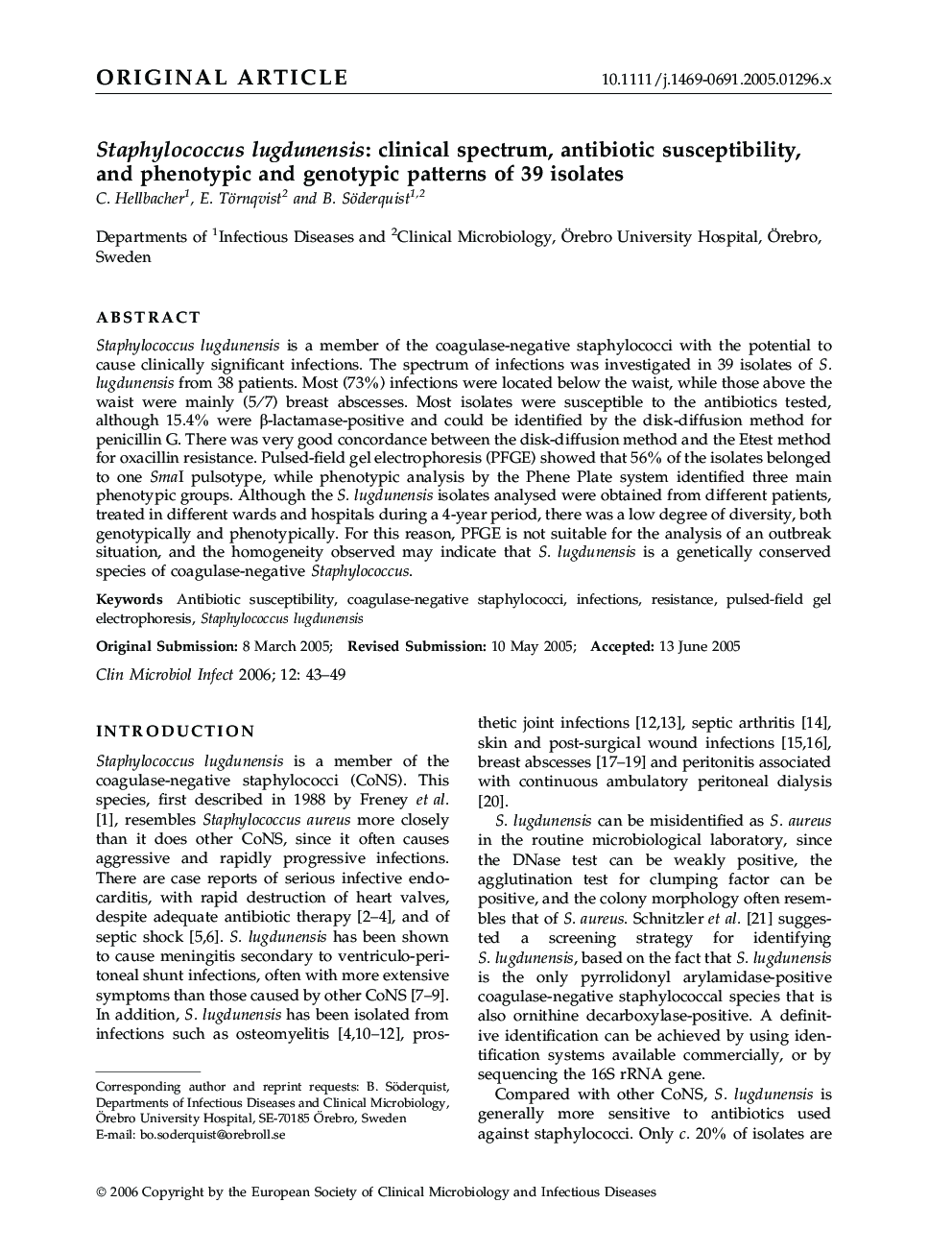| Article ID | Journal | Published Year | Pages | File Type |
|---|---|---|---|---|
| 3398382 | Clinical Microbiology and Infection | 2006 | 7 Pages |
ABSTRACTStaphylococcus lugdunensis is a member of the coagulase-negative staphylococci with the potential to cause clinically significant infections. The spectrum of infections was investigated in 39 isolates of S. lugdunensis from 38 patients. Most (73%) infections were located below the waist, while those above the waist were mainly (5/7) breast abscesses. Most isolates were susceptible to the antibiotics tested, although 15.4% were β-lactamase-positive and could be identified by the disk-diffusion method for penicillin G. There was very good concordance between the disk-diffusion method and the Etest method for oxacillin resistance. Pulsed-field gel electrophoresis (PFGE) showed that 56% of the isolates belonged to one SmaI pulsotype, while phenotypic analysis by the Phene Plate system identified three main phenotypic groups. Although the S. lugdunensis isolates analysed were obtained from different patients, treated in different wards and hospitals during a 4-year period, there was a low degree of diversity, both genotypically and phenotypically. For this reason, PFGE is not suitable for the analysis of an outbreak situation, and the homogeneity observed may indicate that S. lugdunensis is a genetically conserved species of coagulase-negative Staphylococcus.
